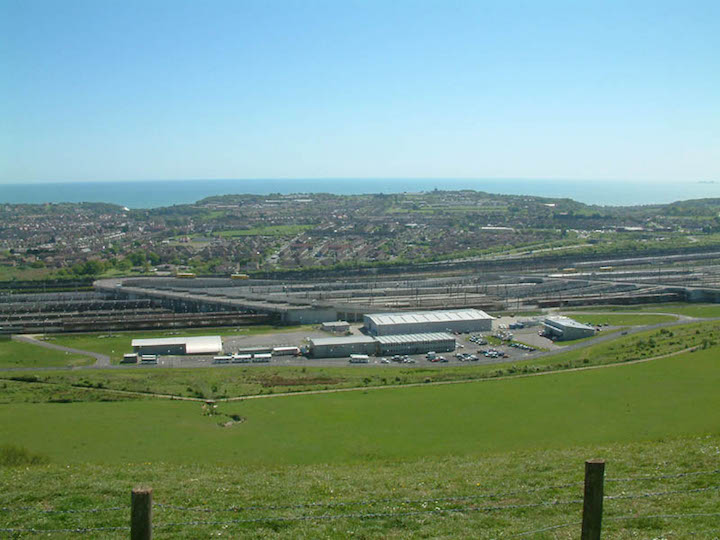
5 Inspiring Feats of Modern Civil Engineering
Read a summary using the INOMICS AI tool
Modern man-made marvels are fast becoming a hot topic of interest these days, as it’s truly outstanding to witness the way civil engineering is transforming societies, pushing the boundaries of what was deemed possible and improving the quality of life for entire generations. From suspended bridges, underwater tunnels or industrial railways to gravity-defying skyscrapers built to withstand an earthquake, all have one thing in common – they are all are made to solve a problem and to make life easier for humankind. As technology advances and as man gets more creative, the list of engineering wonders keeps expanding, so let’s explore the top 5 inspiring feats of modern civil engineering. For more helpful engineering advice, news and career opportunities subscribe to NewEngineer.com here.
Three Gorges Dam (Sandouping, Hubei, China)

Photo Credit: @Yogho, Wikipedia
When constructed, the Three Gorges Dam became the world’s largest hydroelectric power station and world’s largest concrete structure. Located on the Yangtze River, it is over 600 feet wide and almost 400 miles long. This innovative engineering feat is capable of generating electricity equal to 18 nuclear power plants and serves several purposes for the Yiling District of Yichang in China. Apart from electricity production for the area, it also increases shipping capacity and provides flood storage space. Construction of the dam began in 1994 and it opened for commercial operation in 2008.
Channel Tunnel (Folkstone, England, Coquelles, France)

Photo Credit: @Steven Dawson, Wikipedia
The world’s longest stretch of underwater tunnel is nothing short of a modern engineering marvel. The Channel Tunnel, also known as the Chunnel, is a 32- mile underwater rail tunnel that connects Folkstone, England and Coquelles, France underneath the English Channel. Designed and realized as a joint venture between England and France, construction on The Tunnel began in 1988 and was completed in 1994. Its lowest point is 250 feet deep while the portion of rail that runs underwater is 23.5 miles. Train speed reaches 100 miles per hour and a trip between the two cities takes 20 minutes. The Tunnel serves the transportation needs of over seven million people a year, who travel on the Eurostar trains.
The New Valley Project (Western Desert of Egypt)

Photo Credit: @Rémih, Wikipedia
The largest development project in Egypt is an ambitious irrigation system that is supposed to reclaim a half-a-million acres of desert. The Mubarak Pumping Station, which is at the heart of the project, opened for operation in 2005 and was named as one of the five most outstanding civil engineering achievements of the year by the American Society of Civil Engineers. The station pumps water from Lake Nasser through a canal system, transforming over 500,000 acres of desert into agricultural land. Since its start, it has created about 3 million jobs and attracted over 16 million people to the future towns.
The Palm Islands (Dubai, United Arab Emirates)

Photo Credit: @Alexander Heilner, Wikipedia
The Palm Islands are an impressive group of three artificial islands - Palm Jumeirah, Deira Island and Palm Jebel Ali – constructed right off the coast of Dubai. They were finished in 2008 and are made up of around 100 million cubic meters of sand and rock. What’s even more striking is that a total of 210 million cubic meters of limestone, rock and sand had to be dredged and reclaimed so that the islands could be constructed. The outer ring of Palm Islands required 10 million cubic meters on its own with rocks brought from 16 United Arab Emirates quarries.
The Millau Viaduct (France)

Photo Credit: @Stefan Krause, Wikipedia
The Millau Viaduct was completed in 2004, making it the highest road bridge deck in the whole of Europe. The viaduct is located 270 meters above the Tarn River at the highest point of the viaduct. It is the tallest bridge in the world and at 342 metres it is higher than the Eiffel Tower. The viaduct provides passage between Paris and Spain and eases congestion. It was designed with a lifespan of around 120 years and cost a total of 320 million Euros to build.
These are just 5 of the most inspiring feats of modern civil engineering found around the world that demonstrate what the human mind and creativity are capable of. And as science, research and engineering continue to advance – many more are sure to follow. If you want to stay up to date with more engineering news and opportunities, make sure you subscribe to NewEngineer.com, here.
Recommended articles
5 Exciting New Advancements in Engineering Technology
Top 10 Countries for Engineers to Move to
5 Institutions Advancing Women in Engineering
Top 10 Companies for Mechanical Engineers to Work at
Most Sought After Skills Managers Look for in Engineering Grads
Interdisciplinary Degrees In Engineering: What Should I Study?
-
- Assistant Professor / Lecturer Job
- Posted 2 months ago
Assistant Professor - Economics/Finance
At SUNY Canton in Canton, United States
-
- Assistant Professor / Lecturer Job
- Posted 2 months ago
Assistant/Associate/Full Professor in Economics
At Peking University HSBC Business School in Shenzhen, China -
- Conference
- Posted 1 month ago
HEDGE 2026: Health, Environment, Development and Growth Economics: New Perspective and Challenges
Between 5 Feb and 7 Feb in Pisa, Italy



